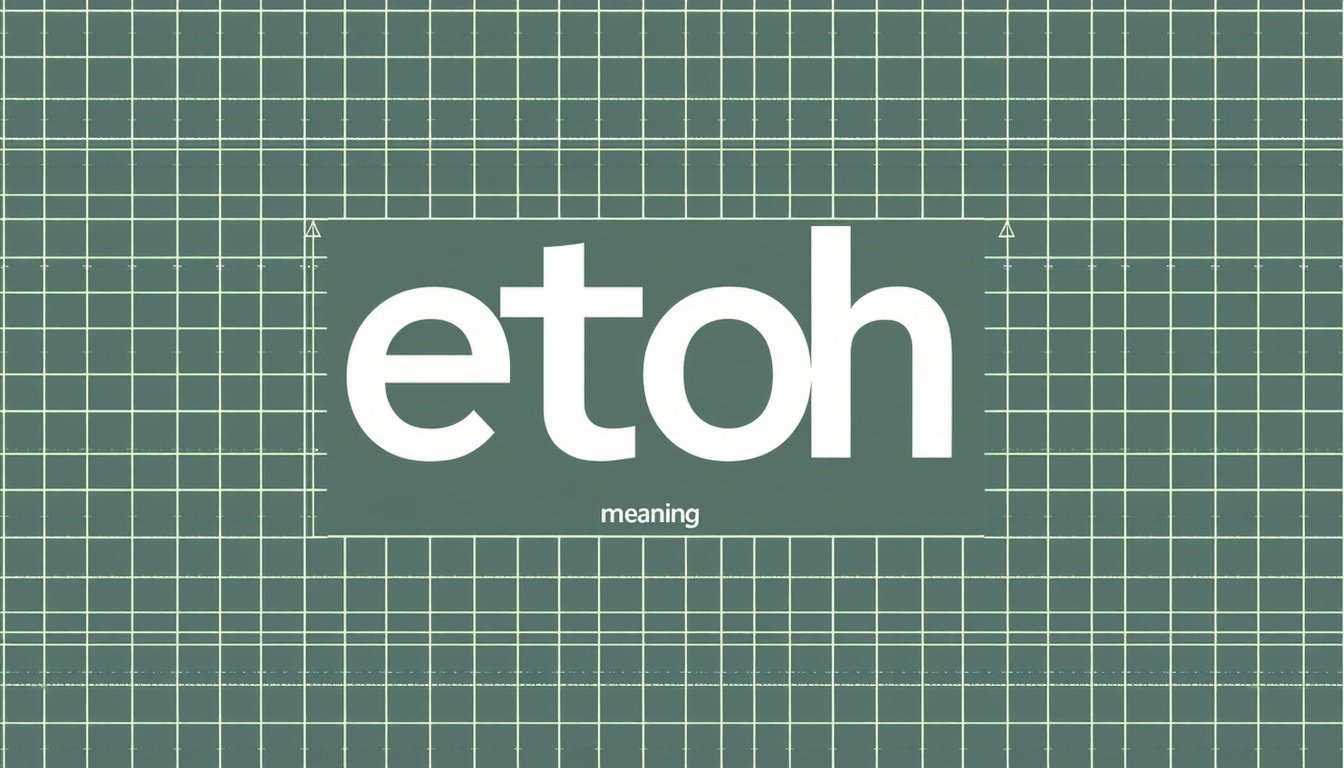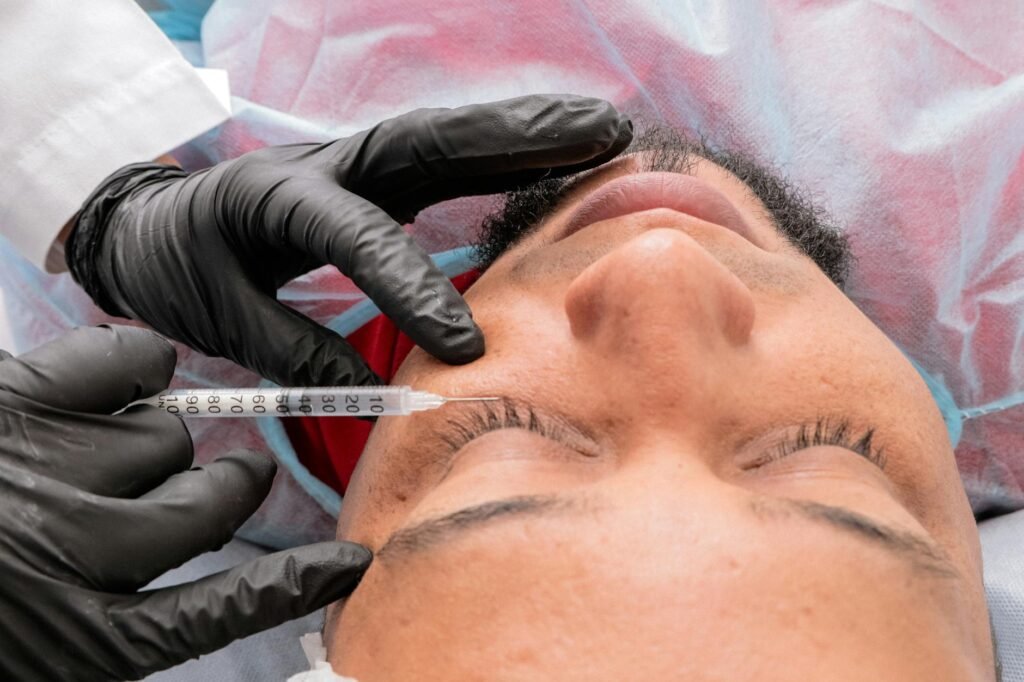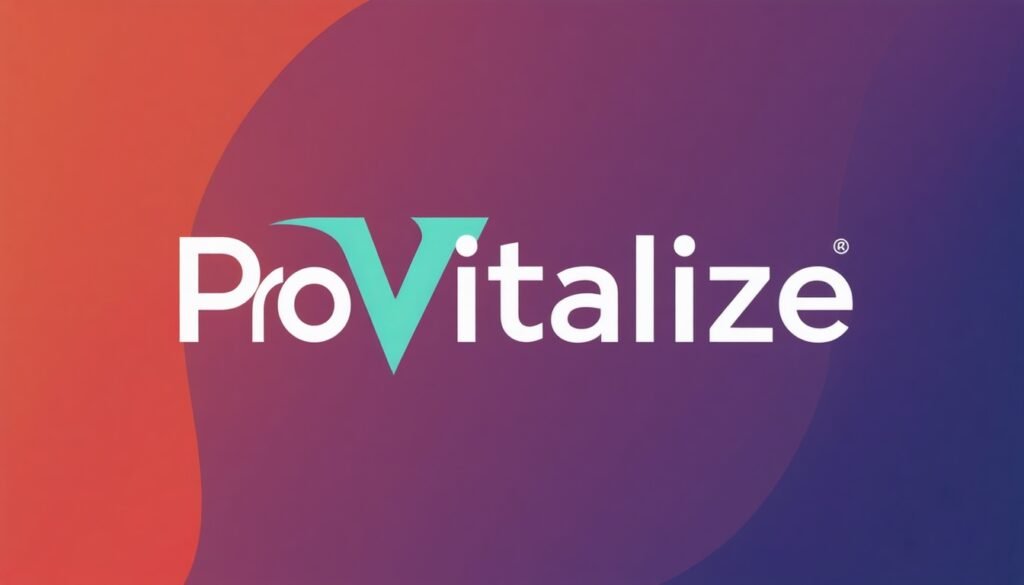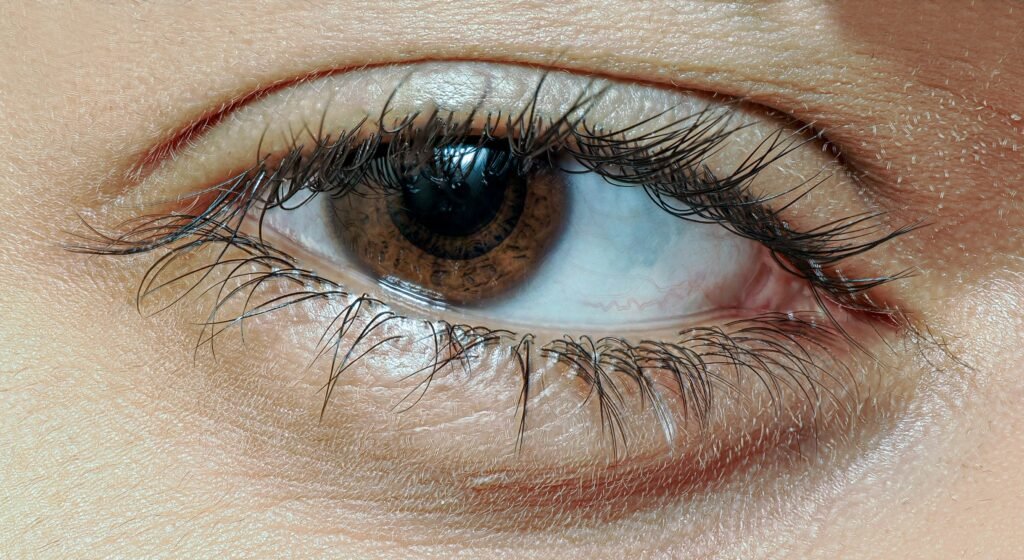Understanding ETOH
Definition of ETOH
ETOH is shorthand for ethyl alcohol, or ethanol, making your drink a drink. You might spot this term in fancy academic papers or hear it tossed around as slang for booze (The Blackberry Center). Ethanol has a chemical formula that looks like CH3CH2OH, but you can also call it C2H5OH, C2H6O, or EtOH, with “Et” meaning ethyl. It’s a clear liquid that smells like wine and tastes pretty sharp.
Globally, ethanol is the runner-up to caffeine in the race of most consumed drugs. It’s the magic ingredient in alcoholic drinks that gives them their kick. Beyond the bar, ethanol’s got a bunch of uses: it’s an antiseptic, a disinfectant, a solvent for meds, and even a lifesaver for methanol and ethylene glycol poisoning. Plus, it’s a key player in making other organic compounds and fuels and can be turned into ethylene, a big deal in the chemical world (Wikipedia).
ETOH in Medical Literature
In the medical world, ETOH is the go-to term for ethanol, especially when talking about its effects on the body and its role in health issues. Doctors and nurses often bring up ETOH when discussing alcohol consumption, alcohol use disorder (AUD), and the health impacts of drinking.
Ethanol is not just for sipping; it’s also a fuel. Brazil is big on ethanol for engines, and the U.S. and other countries mix it into gasoline, with blends like E10 (10% ethanol) and E85 (85% ethanol).
ETOH pops up in conversations about its effects on the brain, liver, pancreas, and immune system in hospitals. For more on how alcohol affects health, check out our section on the Health Effects of Alcohol.
| Application | Description |
|---|---|
| Antiseptic | Cleans and disinfects wounds |
| Disinfectant | Sterilizes medical gear |
| Solvent | Used in meds and chemical making |
| Antidote | Treats methanol and ethylene glycol poisoning |
| Fuel Source | Powers engines and boosts gasoline |
For more on the medical lingo of ETOH, dive into our articles on etoh medical abbreviation and etoh acronym medical. To get the scoop on what ETOH means in medical terms, check out what is etoh in medical terms.
Health Effects of Alcohol
Impact on the Brain
Alcohol, or ETOH, can mess with the brain’s ability to send messages. This can lead to mood swings, acting out, fuzzy thinking, and clumsy movements. If you keep drinking a lot over time, your brain might change in ways that make it hard to think straight or stay mentally healthy.
| Brain Function | Effect of Alcohol |
|---|---|
| Mood | More likely to feel down or anxious |
| Behavior | Less self-control, more risky actions |
| Thought Clarity | Bad judgment and poor choices |
| Coordination | Clumsy movements, more accidents |
Want to know more about the medical lingo around alcohol? Check out our page on etoh medical abbreviation.
Liver and Pancreas Damage
Drinking too much can really hurt your liver. The liver’s job is to break down alcohol, but if you overdo it, you might end up with liver problems like fatty liver, alcoholic hepatitis, fibrosis, and cirrhosis.
Alcohol can also mess with your pancreas, leading to pancreatitis. This means your pancreas gets swollen and painful, and it can’t make the stuff you need to digest food properly (National Institute on Alcohol Abuse and Alcoholism).
| Organ | Condition | Symptoms |
|---|---|---|
| Liver | Cirrhosis | Yellow skin, tiredness, swelling |
| Pancreas | Pancreatitis | Belly pain, feeling sick, throwing up |
Curious about ETOH and its effects? Dive into our article on what is etoh.
Immune System Weakening
Drinking too much can make your immune system weak, leaving you open to infections like pneumonia and tuberculosis. Alcohol makes it hard for your body to make and keep healthy immune cells, so it’s tougher to fight off germs.
| Immune System Effect | Consequence |
|---|---|
| Fewer Immune Cells | Easier to catch infections |
| Sluggish Immune Response | Slower healing from sickness |
For more info on how alcohol affects your body, visit our page on etoh.
Knowing how alcohol affects health is essential for both doctors and folks trying to keep their drinking in check. For more on the risks and guidelines of ethanol, check out our articles on what etoh stands for and what etoh is in medical terms.
Ethanol Consumption Guidelines
CDC Recommendations
The Centers for Disease Control and Prevention (CDC) has some advice on how much alcohol is okay to drink without getting into trouble. They say:
- Women can have up to 1 drink a day
- Men can have up to 2 drinks a day
These numbers are there to help keep you from running into health problems because of alcohol. Men and women process alcohol differently, which is why the numbers aren’t the same for everyone.
| Gender | Daily Limit | Weekly Limit |
|---|---|---|
| Women | 1 drink | 7 drinks |
| Men | 2 drinks | 14 drinks |
Risks of Moderate Drinking
Even if you’re sticking to the “safe” amount, new studies say there might not be a truly safe level of drinking. Even a little bit can mess with your brain and other body parts.
Brain Health
Alcohol can mess with your brain cells, making you more likely to do risky stuff. Over time, even a little drinking can lead to memory problems and other brain issues.
Liver and Pancreas
Your liver has to work hard to break down alcohol, and too much can lead to liver problems like fatty liver, hepatitis, and cirrhosis. Your pancreas can also get into trouble, leading to pancreatitis and other issues (Oxford Treatment).
Immune System
Drinking, even just a bit, can weaken your immune system, making it easier for you to get sick. This is terrible news if you already have health problems.
For more info on how alcohol affects your health, check out our sections on ETOH in medical literature and long-term health effects.
Knowing the risks of even moderate drinking can help you make smarter choices about alcohol. If you’re thinking about cutting back or dealing with alcohol issues, there are treatment options like therapy, meds, and support groups that can help.
Long-Term Health Effects
Bone Density and Fracture Risk
Drinking booze over the long haul can mess with your bones. If you hit the bottle hard, your bones might be as fragile as a grandma’s teacup. This means you’re likelier to break something, especially if you’re not a spring chicken anymore. And if you do break a bone, don’t expect it to heal up in a jiffy—it might take its sweet time (Healthline).
| Health Effect | Impact |
|---|---|
| Bone Density | Thinner |
| Fracture Risk | Higher |
| Healing Time | Slower |
Risks of Moderate Drinking
Even if you’re sticking to the “safe” amount, new studies say there might not be a truly safe level of drinking. Even a little bit can mess with your brain and other body parts.
Brain Health
Alcohol can mess with your brain cells, making you more likely to do risky stuff. Over time, even a little drinking can lead to memory problems and other brain issues.
Liver and Pancreas
Your liver has to work hard to break down alcohol, and too much can lead to liver problems like fatty liver, hepatitis, and cirrhosis. Your pancreas can also get into trouble, leading to pancreatitis and other issues (Oxford Treatment).
Immune System
Drinking, even just a bit, can weaken your immune system, making it easier for you to get sick. This is terrible news if you already have health problems.
For more info on how alcohol affects your health, check out our sections on ETOH in medical literature and long-term health effects.
Knowing the risks of even moderate drinking can help you make smarter choices about alcohol. If you’re thinking about cutting back or dealing with alcohol issues, there are treatment options like therapy, meds, and support groups that can help.
Long-Term Health Effects
Bone Density and Fracture Risk
Drinking booze over the long haul can mess with your bones. If you hit the bottle hard, your bones might be as fragile as a grandma’s teacup. This means you’re likelier to break something, especially if you’re not a spring chicken anymore. And if you do break a bone, don’t expect it to heal up in a jiffy—it might take its sweet time (Healthline).
Health EffectImpact
Bone Density Thinner
Fracture Risk Higher
Healing Time Slower
Immune System Impairment
Too much alcohol can turn your immune system into a slacker, leaving you wide open to all sorts of nasty bugs and germs. Chronic drinking affects your body’s ability to crank out those infection-fighting white blood cells. So, if you’re a fan of the bottle, you might find yourself catching things like pneumonia or tuberculosis more often than you’d like.
Chronic Diseases Associated with Alcohol
Going overboard with alcohol can lead to a bunch of long-term health headaches. Here are some of the big ones:
- Liver Problems: If you’re a heavy drinker, your liver might wave the white flag, leading to issues like fatty liver, hepatitis, and cirrhosis (National Institute on Alcohol Abuse and Alcoholism).
- Heart Woes: Long-term boozing can jack up your blood pressure, mess with your heart muscle, and even up your chances of a heart attack.
- Digestive Drama: Alcohol can irritate your stomach lining, causing gastritis, ulcers, and pancreatitis.
- Hormone Havoc: Drinking too much can throw your hormones out of whack, messing with how your body functions.
- Cancer Concerns: There is a higher risk of cancers of the mouth, throat, esophagus, liver, breast, and colon.
- Brain Blunders: Long-term alcohol use can lead to memory problems, cognitive issues, and a higher risk of dementia (Verywell Mind).
For more information on the effects of ethanol, check out our articles on etoh, the medical abbreviation for etoh, and what etoh is.
Alcohol Use Disorder (AUD)
Definition and Diagnosis
Alcohol Use Disorder (AUD) is a medical condition where folks find it challenging to quit or control their drinking, even when it’s messing up their social life, job, or health. The National Institute on Alcohol Abuse and Alcoholism (NIAAA) says about 14 million adults in the U.S. are dealing with AUD. It’s split into mild, moderate, and severe types, depending on how many symptoms a person shows.
To get a diagnosis for AUD, a person needs to show at least two of these 11 symptoms in the past year:
- Drinking more or longer than planned.
- Trying but failing to cut back on booze.
- Spending loads of time getting, using, or recovering from alcohol.
- Having a strong urge to drink.
- Drinking leads to failing at significant responsibilities.
- Keeping up the drinking despite social or relationship issues.
- Ditching vital social, work, or fun activities.
- Drinking in risky situations.
- Drinking even when knowing it causes physical or mental problems.
- Needing more alcohol to feel the effects.
- Feeling withdrawal symptoms when not drinking.
Symptoms and Risk Factors
AUD symptoms can range from mild to severe, showing up physically and mentally. Common signs include:
- Intense cravings for alcohol.
- Trouble cutting back on drinking.
- Withdrawal symptoms like shaking, sweating, and feeling sick.
- Ignoring duties and activities.
- Drinking despite knowing the dangers.
Several factors can up the chances of developing AUD, including genetics, environment, and mental health. Key risk factors are:
- Genetics: If AUD runs in the family, there’s a higher chance of developing it.
- Mental Health Disorders: Conditions like depression, anxiety, or bipolar disorder can increase risk.
- Social and Environmental Factors: Peer pressure, social norms, and easy access to alcohol can sway drinking habits.
- Early Alcohol Use: Starting to drink young can lead to AUD later on.
| Risk Factor | Description |
|---|---|
| Genetics | Family history of AUD |
| Mental Health Disorders | Conditions like depression or anxiety |
| Social and Environmental Factors | Peer pressure, social norms, access to alcohol |
| Early Alcohol Use | Drinking at a young age |
AUD can lead to serious health issues like brain damage, heart disease, cancer, and liver problems. For more on how alcohol affects health, check out our section on the health effects of alcohol.
Getting a grip on what ETOH means and spotting AUD symptoms and risk factors is key for early help and treatment. If you’re looking for support, there are various treatment options for ETOH abuse, including therapy, meds, and support groups.
Treatment Options for ETOH Abuse
Dealing with ETOH abuse, or alcohol use disorder (AUD), isn’t a one-size-fits-all situation. It takes a mix of therapy, meds, and support groups to help folks cut back on the booze and get on the road to recovery.
Therapy and Counseling
Therapy and counseling are like the bread and butter of tackling ETOH abuse. Cognitive-behavioral therapy (CBT) is a biggie here, helping people figure out the thoughts and actions that keep them reaching for the bottle. With CBT, folks can learn how to handle those pesky triggers and avoid slipping back into old habits.
Other therapy options include:
- Motivational Enhancement Therapy (MET): Gives people a nudge to rethink their drinking habits.
- Dialectical Behavior Therapy (DBT): Teaches skills to handle emotions and reduce harmful behaviors.
- Family Therapy: Brings the family into the mix to boost communication and support.
Medications for AUD
Meds can be a game-changer for AUD, helping to curb cravings and ease withdrawal. Some go-to meds are:
| Medication | Purpose |
|---|---|
| Naltrexone | Cuts down on cravings and the fun of drinking |
| Acamprosate | Helps keep folks sober by easing withdrawal |
| Disulfiram | Makes drinking a not-so-fun experience, keeping folks away from alcohol |
These meds should be taken with a doctor’s guidance to keep things safe and sound. For more information on the medical side of ETOH, check out our page on the medical abbreviation etoh.
Support Groups and Recovery Programs
Support groups and recovery programs are like lifelines, offering a community of folks who understand what you’re going through. They provide emotional support, handy tips, and a sense of belonging, which can boost recovery.
Some popular support groups are:
- Alcoholics Anonymous (AA): A 12-step program offering peer support and a structured recovery path.
- SMART Recovery: Focuses on self-empowerment and self-reliance with a 4-point program.
- Women for Sobriety: Specifically for women, tackling their unique recovery needs and challenges.
Recovery programs might also include residential treatment centers, outpatient programs, and sober living homes. These setups offer a structured space where folks can zero in on recovery with help from the pros.
For more on ETOH and its effects, read our articles on what ETOH is and what it stands for.
By mixing therapy, meds, and support groups, folks dealing with ETOH abuse can find their way to recovery and boost their health and happiness.












